Montpellier
Copyright: Picturereflex/ShutterstockMontpellier
Montpellier, one of Europe's emerging holiday gems, draws travellers with its Mediterranean proximity, enchanting medieval core, and lively nightlife fuelled by its large student community. Nestled amidst scenic landscapes, Montpellier beckons exploration, whether it's the nearby Mediterranean beaches or the adventurous allure of the Cévennes mountains just an hour's drive away.The City
Montpellier — originally called Monte Pestalario — is one of only a few larger cities in southern France that does not have Roman roots. The city was founded in 985 under a local feudal dynasty, the Guilhem, who combined two hamlets and built a castle and walls around the united settlement. During the Middle Ages, Montpellier evolved into a prominent medieval trading hub and a centre of intellectual and cultural pursuits. Its renowned University of Montpellier, established in 1220, holds the distinction of being one of the oldest continuously operating universities in the world. Its roster of famous alumni includes the creator of prophecies, Nostradamus, and the author Rabelais. Over the next centuries, the open-minded and liberal Montpellier was faced with several challenges. It was struck by the plague in the 1300s, and later became a stronghold for the French Protestants, the Huguenots. Until the revocation of the Edict of Nantes in 1685, they fought a losing battle against the Catholic Church and the French crown. By the time these religious wars ended, all surviving Huguenots had either surrendered or fled to England, Ireland or America. Today, Montpellier is known for its university and a quarter of its citizens are students. The beautiful medieval area is a pedestrian haven with marbled alleys like L’Ancien Courrier. Low-set medieval buildings and churches adorn the area’s 16 squares, including the one in the city centre, Place de la Comédie.Do & See
There is plenty to do in the way of culture and entertainment, as well as exciting tours to go on — from regional vineyards and wineries to hiking up Pic St-Loup. Visit the city's many cathedrals (Carre Sainte-Anne is one that stands out with its refurbished interior turned into an art space), walk down the windy streets of the Old Town, and plan a field trip to the nearby seaside villages.
Dining
The cuisine of the Languedoc region is characterised by its rich Mediterranean influence. Known for incorporating sumptuous fresh ingredients sourced from both land and sea, Languedoc cuisine emphasizes fresh produce, olive oil, herbs, and aromatic spices. Seafood plays a significant role, given the region's proximity to the Mediterranean. Traditional dishes include cassoulet (a hearty bean stew with meat), bourride (fish soup with aioli), and anchovy-based specialities. The flavours are robust, often featuring locally sourced meats, cheeses, and wines.
Cafés
Café culture is alive in Montpellier, with quite a few establishments serving coffee of the highest quality. Brunch is very much a thing here, and finding a suitable location in the vicinity should not present much difficulty.
Bars & Nightlife
Montpellier’s large student population sets the tone for its vibrant nightlife. There are quite a few dance clubs, as well as concept bars that are not afraid to break away from convention and put unexpected twists on old familiar favourites. The warm evenings and relaxed atmosphere make Montpellier one of France’s nicest cities for an evening out; many of the bars and clubs are located around Place Jean Jaurés in the Old Town. When in town, remember to savour the locally produced Languedoc wines and champagne.
Shopping
Rue de la Loge is Montpellier's ultimate High Street, and the post-modern Polygone just east of Place de la Comédie is a three-storey open-air mall full of everything from designer fashions to deli foods. Halles Laissac and Halles Castellane are two good-covered food markets next to each other by Place Jean Jaurés. Obligatory purchases include cheese, olives, and regional wines.

 Copyright: Inu/Shutterstock.com
Copyright: Inu/Shutterstock.com
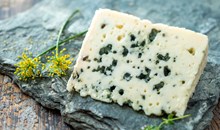 Copyright: JPC-PROD/Shutterstock.com
Copyright: JPC-PROD/Shutterstock.com
 Copyright: Giancarlo Liguori/Shutterstock.com
Copyright: Giancarlo Liguori/Shutterstock.com
 Copyright: Frank Gaertner/Shutterstock.com
Copyright: Frank Gaertner/Shutterstock.com
 Copyright: Ditty_about_summer/Shutterstock.com
Copyright: Ditty_about_summer/Shutterstock.com
 Copyright: 123451/Shutterstock.com
Copyright: 123451/Shutterstock.com
 Copyright: Jossuha Théophile/Unsplash
Copyright: Jossuha Théophile/Unsplash
 Copyright: Pixelheld/Shutterstock.com
Copyright: Pixelheld/Shutterstock.com
 Copyright: blurAZ/Shutterstock.com
Copyright: blurAZ/Shutterstock.com
 Copyright: AMA/Shutterstock.com
Copyright: AMA/Shutterstock.com
 Copyright: Janossy Gergely/Shutterstock.com
Copyright: Janossy Gergely/Shutterstock.com
 Copyright: alexsvirid/Shutterstock.com
Copyright: alexsvirid/Shutterstock.com
 Copyright: Georges Seguin/CC BY-SA 2.5/Wikimedia
Copyright: Georges Seguin/CC BY-SA 2.5/Wikimedia
 Copyright: ZouZou/Shutterstock.com
Copyright: ZouZou/Shutterstock.com
 Copyright: Aleksandar Mijatovic/Shutterstock.com
Copyright: Aleksandar Mijatovic/Shutterstock.com
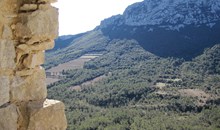 Copyright: Sean Gillies/CC BY-SA 2.0/Flickr
Copyright: Sean Gillies/CC BY-SA 2.0/Flickr
 Copyright: photoshooter2015/Shutterstock.com
Copyright: photoshooter2015/Shutterstock.com
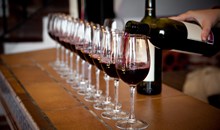 Copyright: Jose Ignacio Soto/Shutterstock.com
Copyright: Jose Ignacio Soto/Shutterstock.com
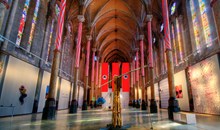 Copyright: Wolfgang Staudt/CC BY 2.0/Flickr
Copyright: Wolfgang Staudt/CC BY 2.0/Flickr
 Copyright: Monkey Business Images/Shutterstock
Copyright: Monkey Business Images/Shutterstock
 Copyright: Yulia Grigoryeva/Shutterstock.com
Copyright: Yulia Grigoryeva/Shutterstock.com
 Copyright: Lesya Dolyuk/Shutterstock.com
Copyright: Lesya Dolyuk/Shutterstock.com
 Copyright: Kzenon/Shutterstock.com
Copyright: Kzenon/Shutterstock.com
 Copyright: Olga Miltsova/Shutterstock.com
Copyright: Olga Miltsova/Shutterstock.com
 Copyright: stocksolutions/Shutterstock.com
Copyright: stocksolutions/Shutterstock.com
 Copyright: baranq/Shutterstock.com
Copyright: baranq/Shutterstock.com
 Copyright: B and E Dudzinscy/Shutterstock.com
Copyright: B and E Dudzinscy/Shutterstock.com
 Copyright: Pressmaster/Shutterstock.com
Copyright: Pressmaster/Shutterstock.com
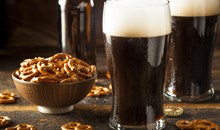 Copyright: Brent Hofacker/Shutterstock.com
Copyright: Brent Hofacker/Shutterstock.com
 Copyright: Kzenon/Shutterstock.com
Copyright: Kzenon/Shutterstock.com
 Copyright: Room 76/Shutterstock.com
Copyright: Room 76/Shutterstock.com
 Copyright: Gerrie van der Walt/Unsplash
Copyright: Gerrie van der Walt/Unsplash
 Copyright: Karthik Balakrishnan/Unsplash
Copyright: Karthik Balakrishnan/Unsplash
 Copyright: ne3p/Shutterstock.com
Copyright: ne3p/Shutterstock.com
 Copyright: LuckyImages/Shutterstock.com
Copyright: LuckyImages/Shutterstock.com
 Copyright: AnastasiaNess/Shutterstock.com
Copyright: AnastasiaNess/Shutterstock.com
 Copyright: marco mayer/Shutterstock.com
Copyright: marco mayer/Shutterstock.com
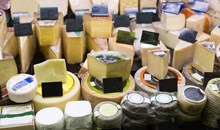 Copyright: Iakov Filimonov/Shutterstock.com
Copyright: Iakov Filimonov/Shutterstock.com
 Copyright: Peter/CC BY 2.0/Flickr
Copyright: Peter/CC BY 2.0/Flickr
 Copyright: bikeriderlondon/Shutterstock.com
Copyright: bikeriderlondon/Shutterstock.com
 Copyright: Ewais/Shutterstock.com
Copyright: Ewais/Shutterstock.com
 Copyright: Kzenon/Shutterstock.com
Copyright: Kzenon/Shutterstock.com
 Copyright: Mutita Narkmuang/Shutterstock.com
Copyright: Mutita Narkmuang/Shutterstock.com
 Copyright: enterlinedesign/Shutterstock.com
Copyright: enterlinedesign/Shutterstock.com
 Copyright: Stuart Webster/Shutterstock.com
Copyright: Stuart Webster/Shutterstock.com
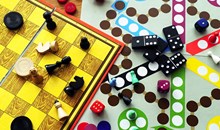 Copyright: Ballda/Shutterstock.com
Copyright: Ballda/Shutterstock.com
 Copyright: Comaniciu Dan/Shutterstock.com
Copyright: Comaniciu Dan/Shutterstock.com
 Copyright: Eduardo Velazco Guart/Unsplash
Copyright: Eduardo Velazco Guart/Unsplash
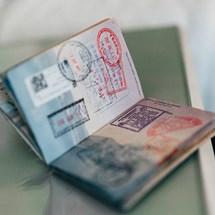 Copyright: ConvertKit/Unsplash
Copyright: ConvertKit/Unsplash
 Copyright: Nathan Cima/Unsplash
Copyright: Nathan Cima/Unsplash
 Copyright: david muscroft/Shutterstock
Copyright: david muscroft/Shutterstock
 Copyright: Peter Kasprzyk/Unsplash
Copyright: Peter Kasprzyk/Unsplash
 Copyright: ricochet64/Shutterstock
Copyright: ricochet64/Shutterstock
 Copyright: Dima Mukhin/Unsplash
Copyright: Dima Mukhin/Unsplash
 Copyright: Wesley Hilario/Unsplash
Copyright: Wesley Hilario/Unsplash
 Copyright: Neven Krcmarek/Unsplash
Copyright: Neven Krcmarek/Unsplash
